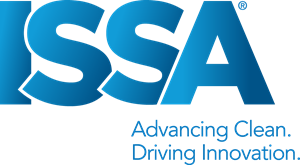Salmonella in Pigs, Antimicrobial Resistance and Abattoir Hygiene - April 2017
A workshop of 40 experienced participants and a number of European experts to discuss current key issues and future concerns for pig production in Europe, was attended by laboratory staff from Evans Vanodine.
Chief Microbiologist Valerie Fotheringham and Microbiology Laboratory Manager Lisa Speed were invited to attend as they had been involved in an APHA Salmonella intervention study in 2015.
Papers were delivered at the workshop by several experts and of importance for biosecurity, disinfection and cleaning, the following points were noted:
Biosecurity in pig farms
Locations with the highest Salmonella contamination in the direct environment were:
pen walls (28%), feeders and troughs (27%), drinking nipples (27%), pig toys (21%);
and in the indirect environment:
central hallway in barn (32%), shoes/boots of farmers (25%), anterooms (25%) and driving boards (23%).
It has been shown by sub-typing of Salmonella isolates that in all farms, in a case controlled study, the same serovars and mostly the same subtypes of Salmonella were found in subsequent production cycles. This demonstrated the importance of residual Salmonella in the direct and indirect environment.
Hygiene improvements, such as cleaning and disinfecting areas and tools more intensively, could therefore be expected to give improvements in reducing Salmonella load in pig herds.
Cleaning and disinfection in salmonella contaminated pig houses
The results of a research project to assess the effectiveness of different types of disinfectants were presented. A range of products (including chlorocresol, glutaraldehyde/formaldehyde, glutaraldehyde/QAC, iodine, peracetic acid and potassium peroxomonosulphate) were tested in faecal suspension and surface models and the most effective then field tested. Most products eliminated Salmonella in the model suspension tests but there was variable efficacy in more challenging models. All products tested on farm reduced total bacterial counts compared to no disinfection.
Evans' GPC8 was one of the disinfectants tested and shown to be effective in model and field tests. It was chosen as the disinfectant to be used in the APHA Salmonella intervention study in commercial pig farms. The results of this study are to be published in 2017.
Feed related factors for Salmonella control in pig herds
The Danish experience in trying to control Salmonella in pig herds since the late 1990s was presented. It was clear that control of Salmonella requires a multi-factorial approach. Sufficient reliable reduction of Salmonella could only be achieved if hygiene and management changes were combined with feed related interventions to change the gut flora.
Livestock Acquired (LA)-MRSA in Norway: Surveillance and control in the pig population
The experience in Norway during a 6-year study period was presented. Eradication of LA-MRSA from positive pig holdings through depopulation, stringent washing and disinfection and repopulation from MRSA negative herds was successful in more than 90% of pig holdings.














